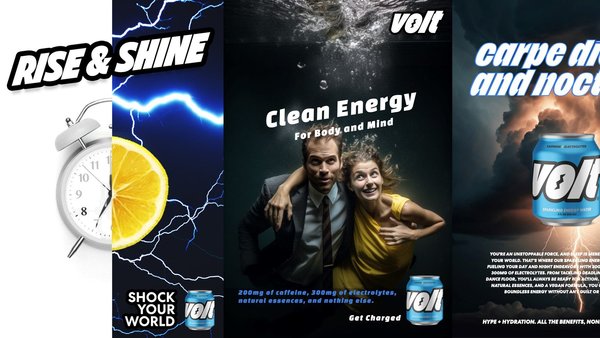All about attention layering /
In an overstimulating content landscape where attention spans are getting shorter, users, creators, and brands are toying with more nuanced and layered modes of communication, says Mobbie Nazir, global chief strategy officer at We Are Social

Photo by Roman Odintsov on Pexels
Everyone is attempting to figure out how best to captivate a generation whose viewership style seems to be built around distraction. This year, TikTok creators believed the answer was building distraction into the content itself by using split screens so that multiple unrelated clips play simultaneously in a single video post – a phenomenon known as ‘sludge content’. And many Gen Z are accustomed to watching feature-length movies chopped up into bite-sized clips (often not even in chronological order).
But this approach can’t be replicated exponentially. If holding attention demands one-upmanship, where do brands go from here? In a social media-scape that sees consumers fight back against the commoditisation of social media, 2024 will be the year of ‘attention layering’.
Attention layering is the shift we are seeing from content that is designed to hyper-stimulate to content that gains attention through more nuanced and layered modes of communication. And it’s one of the key trends in We Are Social’s recent Think Forward 2024 report, which forecasts what’s likely to shape social platforms over the coming year. So how is attention layering likely to pan out?

The next Gen is… more Zen
From content that focuses on grounded, everyday ‘human’ scenes, to that which soothes instead of stimulates – immersive entertainment is a great way to guide viewers back to relaxed modes of focus in 2024.
A good example of immersive content is something like Primitive Technology on YouTube: content that shows in glorious detail how to build things completely from scratch using no modern tools or materials. The films have no voiceover, and the soundtrack is just sounds of the wild and the noise generated by the making process. The topics include how to make iron from creek sand and three different ways to make charcoal.
Another absorbing example is Roku City, a looping animation shown when TVs using Roku (an American streaming tech) are left idle. Otherworldly in nature, viewers are transported to a futuristic urban environment, the screen-saving film slow pans through a purple-hued cityscape replete with apartments, cafes, and bowling alleys with sci-fi-like rockets, monsters and UFOs in the background.
A greater understanding of healthy digital consumption will drive this cultural step change and it’s something we’re seeing across multiple age groups, not just younger audiences. Rather than hacking people’s attention via overstimulation at the expense of meaning, approaches that minimise sensory overload will move to the fore. It’ll be a significant change from the content of 2023, divorced from reality by its high production value and whirlwind narrative. In that sense, much of the appeal of immersive content will come from the refreshing contrast it provides.
When the execution is right, it’s possible to push the boundaries of content duration and hold audiences’ attention for far longer than has been considered possible in the recent past. Take Nissan’s recent partnership with YouTube creator Lo-Fi Girl to promote the launch of its Ariya car. Nissan created a 4-hour stream on YouTube, depicting Lo-Fi Girl driving the car while listening to chill beats. Many of the viewers praised the ad, explaining how they had let it play ambiently in the background to soundtrack their lives for extended periods.

Photo by Aaron Weiss on Unsplash
Long-form content will return
It’s not all about short attention spans and hyperedits, even for younger, more digitally native generations. The rise in popularity of the long-form video essay indicates a desire among this cohort for in-depth and entertaining learning. So a slower style of knowledge consumption overlaid with the kinds of memes and TikTok references popular in geek culture, will lean into entertaining creative that also promotes critical deep thinking.
With online information available to willing audiences on almost every topic or niche interest imaginable, it’s easy for people to identify subjects that pique their intellectual curiosity. And once they do, they dive right in. This hunger for knowledge is evidenced by the enormous popularity of creators such as Mina Le, who shares deep dives into fashion and social trends with videos such as ‘Let’s talk about the rise of “-core” and “girl” aesthetics’.

Photo by Luis Santoyo on Unsplash
Experimenting with alternative narrative styles is critical for brands
For brands, attention layering means that rather than demanding to be seen and heard, marketers can experiment with a broad scope of novel ways to attract and maintain attention – from new formats to alternative narrative styles.
Disney / Pixar and the NFL teaming up for the Toy Story Funday Football event is a great example. The fully animated broadcast of the NFL’s first London game of the 2023-24 season gave youngsters a chance to watch the game in ‘Andy’s Room’. The clever use of the tracking tech on the NFL players meant the game was also played out in real-time by toys in the Toy Story universe.
Consumers will engage more readily with brands that take the time to create experiences that really matter rather than adding to the deluge of meaningless chatter. By finding ways to seamlessly integrate into their audience’s lives for longer periods, and by contributing to more meaningful and relaxing experiences, brands can promote a healthier and more balanced model of content consumption.
Want more of the same? /
We don’t just write about best-in-class campaigns, interviews and trends. Our Members also receive access to briefings, online training, webinars, live events and much more.







